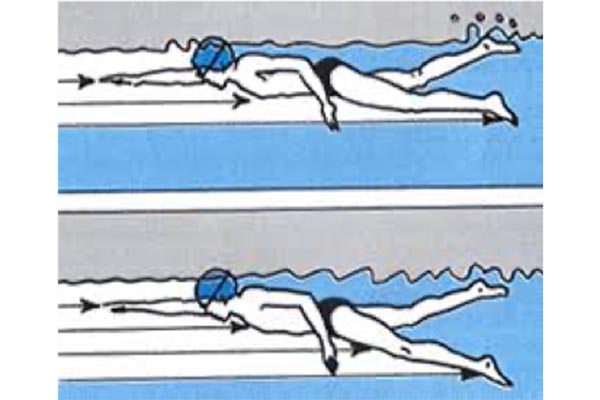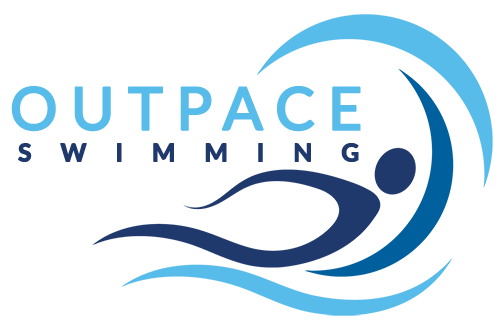In swimming, only about 20% of performance is related to fitness while the other 80% is technique and efficiency.
The main difference between swimming and other sports is that we don’t have a solid ground to use to propel our bodies.
Water is also roughly 800 times denser than air, so a perfect body position is absolutely necessary in order to move forward with the least possible drag.

The two main factors which slow you down in swimming are:
1. Resistance caused by the swimmer’s body shape and position
2. Resistance caused by turbulence at the surface from the swimmer’s head
In swimming, the faster we move through the water, the greater the drag.
Drag increases by the square of the speed that we swim.
For example, if you are swimming 50 meters in 25 seconds (2 meters per second speed), you have four more times the drag of someone swimming 50 meters in 50 seconds (1 meter per second speed).
This means, as we swim faster, the effects of drag will become more noticeable.
By cutting down drag, we not only help ourselves to swim faster, but we also learn how to swim more efficiently by improving our technique.
It is therefore essential to work on our technique before we worry about improving swimming fitness and speed.
The two main principles of an efficient swimming technique are:
- Minimizing drag and deceleration by improving your streamline and head & body position as well as your body rotation from the waist, to generate power.
- Maximizing propulsion by developing your catch and power phase of the stroke.
Swimming slowly in training is crucial to building good technique. Improving your technique is essential to improve your speed and endurance.


